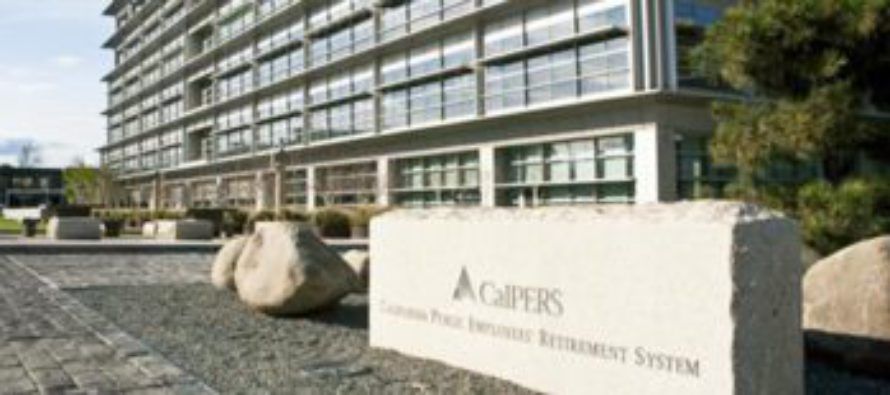Finance Department urges CalPERS to reduce risk

 The California Public Employees’ Retirement System is considering reducing its investment risk with a plan that would be so ineffectual it could lead to a “rate shock” when the pension bills come due, according to the California Department of Finance.
The California Public Employees’ Retirement System is considering reducing its investment risk with a plan that would be so ineffectual it could lead to a “rate shock” when the pension bills come due, according to the California Department of Finance.
CalPERS’ proposed Funding Risk Mitigation Policy would slightly lower its expected investment return, also known as the discount rate, in good investment years.
Specifically, it would reduce the discount rate by 0.05 percentage point when the investment return is at least 4 percentage points above the discount rate. Currently the discount rate is 7.5 percent, so the investment rate threshold would be 11.5 percent.
An alternative under consideration would lower the discount rate when investment returns are 2 percentage points above the discount rate.
The problem with the 11.5 percent threshold, according to critics, is that it would result in CalPERS not doing enough to lower its investment risk. In only half of the past 10 years were investment returns above 11.5 percent. Returns were just 6.5 percent last year, and they were 2.4 percent in the first half of this year.
As a result, it could take 25-plus years, perhaps never, for CalPERS to lower its discount rate to 6.5 percent, Eric Stern, a DOF budget analyst told the CalPERS board on Oct. 20. “We do feel that the strategy to lower risk only in exceptionally good years really continues to expose the fund to too much risk over the coming decades,” he said.
Taxpayer Dollars at Stake
Millions of taxpayer dollars are potentially at stake. Investment earnings account for two-thirds of CalPERS’ income. More than 3,000 government employers provide 21 percent of the system’s income. The remaining 12 percent comes from CalPERS’ 1.72 million members, nearly a million of whom are no longer active.
When the expected rate of return on investment is lowered, the difference must be made up by contributions from state and local governments, school districts and current government employees. That would likely result in less funding for other government services and/or the need for tax hikes.
Despite that, in order to be more fiscally responsible, CalPERS should reduce its discount rate to 6.5 percent, according to Stern.
“We are really looking for stability, predictability, some more certainty with our contribution rates,” he said. “Acknowledging that investment returns are likely to be lower at some point in the future and have some significant dips, means that local governments are going to need to start paying more money now to pay for those promised benefits.
“We need to implement these changes now, sooner rather than later, instead of waiting for those future investment returns that we can’t really even count on. It would create more stable rates for governments and allow governments to plan for these higher costs in the future. Instead of delaying the impact and leaving the state and other employers to even higher rate shocks in the future.”
Danger of Recession
A recession, which is due according to some economists, could hit CalPERS’ $292 billion investment portfolio hard. Sixty-three percent of its investments are in growth assets, mostly stocks. These have the potential for good returns such as CalPERS’ 16.2 percent gain in 2013, as well as bad returns like its 27.1 percent loss in 2008. Much of the rest is invested in less risky assets such as bonds and real estate.
Stern acknowledged that the CalPERS board appears set to adopt the proposed policy to reduce risk only in very good investment years. But he asked the board to reconsider and instead phase in a lowering of the discount rate to 6.5 percent over the next five years, regardless of the investment returns during that time.
Richard Costigan, who was chairing the Finance and Administration Committee meeting, acknowledged that the Department of Finance’s concerns are legitimate, given market volatility and the aging of CalPERS’ membership resulting in increased pension payouts.
“At the end of the day, where Finance would like us to go I do think is the right place to go,” he said. “I don’t think we’re going to get there. Long-term the market has done exceptionally well. But when you look at the short term snapshots … our workforce is getting older, we are getting less people.”
But the discussion indicated that it’s unlikely the board will grant Stern’s request. In fact, board member Ron Lind pointed out that the board has never set a 6.5 percent discount rate target.
Mitigating Risk Going Forward
Much of the discussion concerned board member Bill Slaton’s suggestion to lower the threshold trigger to 2 percentage points above the discount rate. That equates to investment returns of at least 9.5 percent, which have been achieved in seven of the last 10 years.
“I have been an advocate for a more, you can use the term ‘aggressive,’ but I would like to say just more structured, small increments that employers could tolerate, but at the same time moving quicker to reducing our risk,” said Slaton.
“I think we face a tremendous amount of risk going forward. We’ve spent the last year and a half talking about that risk, talking about an aging workforce, talking about the ratio difference in active [employees] versus retirees. We’ve obviously spent a lot of time on market volatility. We’ve experienced that recently.”
He continued, “I think [2 percentage points above discount] is a modest enough change. I think it’s not going to have a radical impact over time on employers. But I think it sends a message that the priority here is risk mitigation.”
He was backed by board member Richard Gillihan. “I think we are missing an opportunity in putting off the day of reckoning,” he said. “And it may come back and bite us.”
Also supportive is Dana Hollinger, who said, “I would prefer something with more certainty. Because I think going forward we’re in for some challenging times. My goal has always been to mitigate risk and make sure that these benefits are sustainable.”
Minimizing Damage to Municipalities
But other board members prefer the 4 percent threshold, worried about the financial hit to governments and their employees. “We can’t ignore the fact that over the last several years employers have noticed large rate increases they are still dealing with,” said Lind.
Theresa Taylor is also on board with the 4 percent threshold. “There are public agencies that don’t have the money to move forward on a policy to reduce our risk right now,” she said.
“I agree we need to reduce our risk,” Taylor continued. “I think it’s very important that we are working to reduce the risk. But it’s also important that we don’t hurt taxpayers and municipalities by doing it so that too much is being taken away from the municipalities that are already struggling with their rates increasing.”
J.J. Jelincic may be the hardest line supporter of the status quo, arguing for keeping the discount rate at 7.5 percent in perpetuity. “I understand that we’re under a lot of pressure to reduce our assumed rate of return because people think it’s too high,” he said. “Much of that pressure is coming from people who are opposed to defined benefit plans and people who buy Knight-Ridder newspapers.
“This may be the best idea since sliced bread, but our job is to balance risk. Over the long-term I think 7½ percent is probably doable – this year, next year probably not. But we don’t run the system for this year or next year.”
Slaton countered that it may not be doable, pointing out CalPERS’s retirement plan is only 75 percent funded. “If we had another [market crash] event similar to the event we had in 2008, then we reach a point where we can’t recover,” he said. “It is an asymmetric curve in regard to downside versus upside. The impact of the downside is much more intense and we need to be focused on it.”
Costigan agreed to place both the 2 and 4 percent threshold options on the Nov. 17 agenda when the policy comes back for a second reading. The board plans to adopt the policy by the end of the year.
Related Articles
China beats Mexico on CA immigration
While Mexico continued to drive the debate about immigration policy in the U.S., California experienced a significant demographic shift that
Redevelopment giveaway for Oakley?
AUG. 31, 2010 By KATY GRIMES A small Contra Costa city appears to have an unusual amount of pull in
PG&E may not survive latest wildfire without more state help
How much of wildfire costs not covered by insurance should be paid by California’s giant investor-owner utilities has been a




